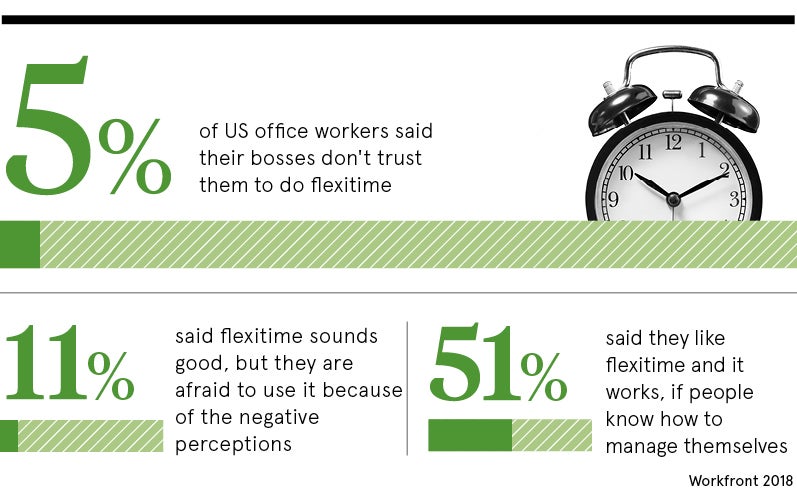As our crisis-led immersion in virtual connection, conferencing and collaboration has amply demonstrated, it is technology that enables workforce empowerment when the chips are down.
Yet while millions have relied on tech to maintain a semblance of normality in extraordinary times, it is cultural change, as much as enterprise software, which will transform flexible working from a temporary fix to the new default.
Despite initial misgivings on both sides, the potential financial and wellbeing advantages of remoteness are now clear. For those organisations able to embrace the growing appetite for autonomy, self-determination and greater meaning at work post-coronavirus, the empowerment gains made during lockdown will be permanent.
“Culture and technology that work together to give employees the ability to use the right tools and collaborate with the right people to do the right work at the right time, no matter where they are or how they want to work” is no longer a nice to have, argues Laura Butler, senior vice president of enterprise work management platform Workfront.
In the coming months, she says, “getting the tech and the culture right will be a business imperative”.
Unlocking the door workforce empowerment
The willingness of the workforce to use technology, some of it alarmingly unfamiliar, has been a key factor in ensuring so many organisations are surviving through the pandemic. Ensuring all workers continue to feel valued and included as the rebuilding phase gathers pace is now a priority.
Nicole Alvino, who founded the workplace communications platform SocialChorus, says: “Every employee, even the most disengaged, has needed to receive certain important information and support from their employer during this difficult time.”
While previously engaged employees are more receptive to the use of collaborative tech, or indeed to any new process, the virus “has taught us that reaching all employees is foundational for any change”, she says.
While the role of internal communications in informing, advising and boosting morale has taken centre stage in the pandemic, it is important this continues. Organisations that remain a “trusted and transparent source of information” will see a significant upswing in engagement, Alvino believes.
For those people who continue to be subjected to prolonged virtual conferencing or mandatory hourly progress reports, the whole notion of workforce empowerment may still feel a long way off.
Trusting remote staff to do their job isn’t easy for some employers, regardless of the fact that Zoom, Skype, Microsoft Teams and so on have been available for some years. In the view of Michaela Rollings, senior manager at Hive, a project management platform, suspicion is fast melting away however.
“If there’s a silver lining in all of this, it’s that organisations have increased their digital interaction across all areas of employees’ lives,” she says. “Post-coronavirus, our hope is that this trend of active engagement will continue as work-life balance moves towards work-life integration.”
Work-from-home accelerant on starting blocks
While many organisations had relegated remote-work technology to the “one day” wish list, COVID-19 precipitated an emergency overhaul.
While Alvino notes “five-year roadmaps to move to the cloud” are common among larger customers, the need to deliver on them practically overnight has helped expose basic connectivity, rather than staff duplicity, as the core issue for many firms.
“Every leader has felt the pain of needing to deliver real-time, targeted, measurable communications to their entire workforce,” she says, a steep learning curve, which has been shared by all too many of their newbie remote employees.
As more organisations build confidence in the power of remote technology to keep the show on the road, the new question is around whether or not we need to go into the office at all.
The prospect of greater flexibility for the many, not the few, is attractive. Yet for this to happen, entrenched thinking around presenteeism will need to be challenged, says Emma de Sousa, UK managing director at IT solutions provider Insight.
“Even if they have all the technology in place, too many employers and employees still have a mindset tied to the office-based nine to five,” she says. “The workforce will never feel empowered if they are solely judged on what time they go online or how long they spend there. In future, it’s vital our understanding of work moves from time, place and actions, to looking at goals and results.”
Understanding individual tastes will also be paramount. While some of us find solo working at night, perhaps, a welcome change, others will prefer a structured routine with maximum team engagement. To build workforce empowerment, both will need to be supported, de Sousa believes.
Leaders must also be positive role models for change, she adds, particularly in terms of demonstrating there is no inherent risk in taking advantage of flexible working initiatives.
The need for job satisfaction is human
We can’t change the fact that we will always have unexpected emergencies to deal with and, while they won’t always be a matter of life and death, even supply chain disruptions can pose a significant threat.
Building the cultural and technological resilience that powers a business-as-usual mindset in a crisis is vital, but so too is paying attention to the very human need for our work to have significance, says Workfront’s Butler.
“Technology that connects work overall and the processes, data, content and people who perform it, is critical for businesses trying to navigate a world which is increasingly digital, distributed and borderless,” she says.
“Great work can only happen when people have the right technology, are connected regardless of physical location, have the freedom to create and innovate, and know that what they do matters. That’s why this isn’t a coronavirus story; it’s a future of work and workforce empowerment story.”
Unlocking the door workforce empowerment

